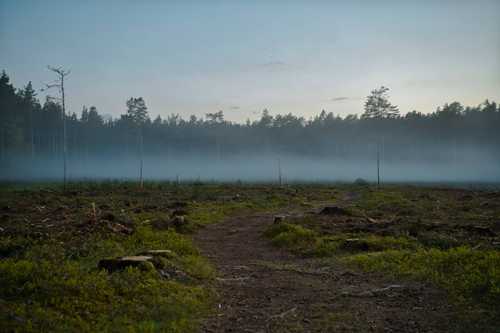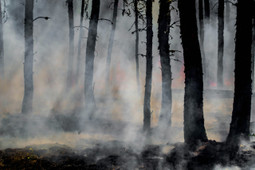
The number of people killed by war during human history (as of 2003) is estimated as falling somewhere between 150 million and one billion. In the 20th century alone, war claimed 108 million lives.
The facelessness of statistics can make them hard to comprehend – particularly if the units that make them up each constitute the extinguishment of a human life. How do we process scarcely imaginable figures of this magnitude?
Yet these are figures which continue to rise. The Geneva Academy of International Humanitarian Law and Human Rights monitors “situations of armed violence that amount to an armed conflict under international humanitarian law”; at the time of writing, it lists more than 110.
More than 45 are taking place in the Middle East or North Africa; more than 35 in sub-Saharan Africa; 21 in Asia; seven in Europe; and six in Latin America (specifically, in Mexico and Colombia). It seems likely that the majority of us would be unable to name most of these conflicts, let alone have a solid grasp on their causes or broader ramifications. Apart from the tiny proportion that become causes célèbres on the international stage, taking up a corresponding position in global news cycles (albeit often only intermittently), armed conflicts are often reduced to background, with their horrors – from a position in the Global North – often seen to happen elsewhere, to other people.
Our appetite for engaging with the reality of warfare, then, is very limited in its scope. This may account for our broader lack of understanding of the nature of warfare.
The forgotten victims
The horror of war extends, of course, beyond a tally of their death tolls. Let us not forget those who are injured, both physically, and – perhaps more insidiously – mentally. In addition, wars “make people’s lives insecure, [and] lower their living standards”, while the prospect of nuclear warfare threatens the continued existence of all humanity.
But perhaps the most forgotten victim is the environment. From a human-centric perspective, bringing up the effect of warfare on the nature world could be seen as frivolous or inconsequential – which would be of a piece with our generally anthropocentric (mis)understanding of the world, and chronic devaluing of the natural processes on which we reply and of which we are a part.
How does warfare impact the environment?
At their simplest, impacts include:
- Around 5 to 6% of the planet’s surface being occupied by military training areas (including areas which are deemed “ecologically important”)
- Pollution caused by militaries (over the past two decades, the US military alone was “responsible for 1.2 billion metric tons of greenhouse [gas] emissions”)
- Nuclear testing; 2,056 such tests have been carried out since 1945 (more than half by the US)
- Populations’ displacement by active conflicts straining local ecologies, meaning that vulnerable species may be killed for food or to generate funds for arms and supplies (for example, through the sale of elephant ivory).
In addition, the ranges of more than 13,000 bird and animal species have been found to “overlap with armed conflicts and associated conservation threats” between 1989 and 2018. Six hundred and fifteen species, in particular, were found to be “exposed to both widespread and frequent conflicts”, a statistic that draws attention to the fact “that areas that have experienced conflict tend to also have a recurrence of conflicts” (such as the disputed India-Pakistan border).

There is also a correlation between species which the International Union for Conservation of Nature (IUCN) has categorized as being threatened with extinction, and those which overlap with conflicts. The world over, the majority of birds and mammals are under threat from “habitat loss, overexploitation and human disturbances”, but these threats are more common in the case of species affected by conflict – showing that one of its knock-on effects is to multiply other threats, making “hunting and habitat loss and degradation […] more prominent”.
Specific threats to wildlife caused by armed conflict include both:
- Direct threats such as “certain species being targeted by members of conflicting parties” (as in the case of African elephants being hunted for their meat and ivory in Mali and the Democratic Republic of Congo), or unintended deaths (such as eastern gorillas killed by landmines in Rwanda)
- Indirect threats such as the damage, loss, and degradation of habitats – effects which may continue after the cessation of hostilities, due to the “wide-ranging socioeconomic and institutional changes” conflict may have brought about; for example, “the weakening of regulatory institutions leading to overexploitation of natural resources”
And nor is vegetation immune to the deleterious effects of conflict; areas experiencing conflict are quadruply “likely to experience deforestation compared with conflict-free areas globally”.
The environment may even be the reason why certain wars are fought; it has been estimated by the United Nations Environment Programme (UNEP) that, over the last 60 years, 40% of intrastate conflicts have been related to natural resources (even if they seldom – perhaps never – the sole cause). Eighteen conflicts that have occurred since 1990 “have been fueled by the exploitation of natural resources”, either due to the scarcity of fundamentals such as water or fertile land, or the high value of oil, timber, or precious stones or metals.
Climate change, though not characterized as being a direct catalyst for conflict, is nevertheless also “a threat multiplier that exacerbates resource scarcity and existing vulnerabilities”.
What are some examples of environmental damage caused by warfare?
Harm to the environment as collateral damage takes many forms; the following examples are only a handful of examples taking place at different times on different continents.
World War II (1939–1945):
Inexact statistics mean that estimates of combined combatant and civilian fatalities during World War II (including war-related famine and disease) vary from 35 to 60 or even 85 million. Nevertheless, World War II was the deadliest, largest conflict in history. As such, its effects upon the environment were equally immense:
- Chlorofluorocarbons – chemical compounds also known as CFCs – were used extensively in refrigerants, aerosol propellants, and industrial processes. CFCs release chlorine atoms when exposed to ultraviolet radiation, causing damage to the ozone layer of the atmosphere. This allowed the unforeseen long-term impacts of penetration by ultraviolet (UV) radiation, which “threaten[s] human health, ecosystems, and productivity in agriculture”
- Aircraft landing strips used for refueling and as staging posts for operations in the Pacific theater of war caused “catastrophic human interference with coral atoll ecosystems”, by introducing both weeds and cultivated plant species into oceanic island ecosystems
- Military operations in Russia led to the deforestation of large areas, “leaving desolate landscapes where formerly colorful ecosystems had existed”. The resulting loss of biodiversity not only disrupted delicate systems such as water cycles and soil stability, over long periods, but eroded the environments’ ability to survive, as well as impacting local communities who replied economically upon the forests
- The amount of deaths caused by the atomic bombings of Hiroshima and Nagasaki “is probably fundamentally unknowable”, in part due to the extensiveness of the devastation caused, and because of the long-term repercussions, which include radiation sickness, subsequent increases of cancer rates, and birth defects. However, estimates of combined mortalities range from 110,000 to 210,000, with around 75,000 to 113,000 of these deaths occurring on the first days of the bombings. The deployment of nuclear weapons also marked the beginning of an arms race with “profound environmental implications”; though the bombings remain the only use of atomic weapons during warfare to date, testing also “release[s] […] radioactive materials into the atmosphere, soil, and water”: “pollutants [which] ha[ve] far-reaching consequences for ecosystems, causing genetic mutations in plants and animals, [and] contaminating food chains”.
The Vietnam War (1955–1975):
North Vietnamese forces used forest cover to their advantage during this conflict; as a result, the US military developed ways to clear vegetation. In addition to the deployment of 13 million tons of bombs, methods included the use of napalm (a sticky, highly flammable jelly) and the Rainbow Herbicides: chemical herbicides and defoliants which included Agent Orange. Seventy-two million liters of herbicides were used to not only decimate forest cover, but impede agricultural food production. Defoliants alone razed some 7,700 square miles (12,390 sq km) of forests – a commonly cited example of ecocide.
Exposure to Agent Orange can cause “cancer, congenital (birth) disorders and life-threatening health complications” in humans. Less attention has been paid to its effect on wildlife, but its half-life ranges from 20 to 100 years, depending on conditions. When no longer required, 2.22 million gallons of Agent Orange was incinerated on an atoll in the South Pacific.

In 2004, a New York district court “held that ‘herbicide spraying . . . did not constitute a war crime pre-1975’”.
The Rwandan genocide (1994):
Over a period of around 100 days in this year during the Rwandan Civil War, 500,000 to 800,000 people, primarily from the Tutsi minority ethnicity, were killed by militias from the socio-ethnic Hutu group. As a result, two million Rwandans fled to refugee camps in Tanzania and Zaire (now the Democratic Republic of Congo).
From the end of the year, around 720,000 Rwandans lived in camps on the edges of Virunga National Park in present-day Congo – a site with UNESCO World Heritage status, in part due to its maintenance of rare mountain gorilla habitat. “Up to 1,000 tons of wood” was removed from the park every day for the next two years, for use as fuel or to build shelters. “105 square kilometers [65 sq miles] of forest […] [was] affected to one degree or another”, including 22 sq miles [35 sq km] “stripped bare” by mid 1996, demonstrating how the displacement of people in an appalling situation can exert pressure on the environment “as great as [that] of direct military activities”.
The Gulf Wars (1980–1988 and 1991) and the Iraq War (2003–2011):
Among many other consequences:
- Iraqi forces invaded and occupied Kuwait in 1990; the following year, while retreating to avoid a confrontation with a US-led coalition, Iraq adopted a scorched earth policy in an attempt to disable Kuwait’s oil-producing infrastructure. Explosives were used to “systematically and comprehensively destroy […] more than 750 oil wells”. The burning wells produced a “widely dispersed smoke plume” big enough to be visible from space. This degraded air quality in the region via the release of a “toxic mix of sulfur dioxide, nitrogen dioxide, carbon monoxide, polycyclic aromatic hydrocarbons, particulate matter and metals such as nickel, vanadium and lead”, causing damage to both the environment and human populations. In addition, oil and soot combined with sand and gravel, forming “a layer of hardened ‘tarcrete’ over almost 5 percent of the country’s area”, while the continued sinking of oil into the sand has potential ongoing consequences for Kuwait’s already limited groundwater resources
- Similarly, what was perhaps the largest oil spill in history was deliberately caused by the Iraqi military, which “dumped up to 1.5 million tonnes of oil from several tankers”, in order to foil a potential amphibious landing by the US. The oil had serious ramifications for the ecosystem of the Persian Gulf around Kuwait and Iraq
- Among the most conspicuous effects of the Iraq War, caused not just by conflict itself but “poor environmental management and weak governance”, is the “ruinous damage” done to the environment in the south of the country, including the deliberate, punitive drying-out of the unique marshland ecosystem in the Tigris–Euphrates basin (part of the Mesopotamian cradle of civilization) and the deforestation of more than 15 million date palms.
But what is being done to oppose the environmental damage caused by war?
Given the anthropocentrism of our species, some of these impacts caused by warfare may seem trivial by comparison to human suffering and loss. Our anthropocentrism also obscures the awareness of these environmental impacts – yet they remain consequential in their own right.
Armed conflict seems unlikely to become less of a fixture of human existence. The horrible reality is that war can be profitable – and where profits are concerned, both human and environmental welfare are disposable.
The environmental consequences of current conflicts (particularly those which do not gain traction within the mainstream media) are not clear at the present time. This makes the need for increased awareness of their impacts all the more crucial.
There are some flickers of hope. Since 2018, the Conflict and Environment Observatory (CEOBS) has worked to “increas[e] awareness and understanding of the environmental and derived humanitarian consequences of conflicts and military activities”. In so doing, they “seek to challenge the idea of the environment as a ‘silent victim of armed conflict’”.

CEOBS’ projects include explorations of data-gathering about environmental harm caused by conflict through “participatory citizen science methodologies”; a partnership with Norwegian People’s Aid (NPA) “to improve environmental safeguarding within humanitarian disarmament”; increasing transparency around militaries’ (voluntary) self-reporting of their greenhouse gas emissions; the Conflict and Environment Academic Network (CEAN), “a community for academics and researchers engaged in the environmental monitoring and assessment of armed conflicts”; and the preparation of STEM (Science, Technology, Engineering and Mathematics) teaching resources, in order to allow schools to teach young people about the environmental consequences of armed conflicts.
Meanwhile, since 2001, the International Day for Preventing the Exploitation of the Environment in War and Armed Conflict has been observed every November 6. In addition, the UN Environment Programme (UNEP) “has been working with various [UN] Member States and other partners to strengthen the protection of the environment before, during and after armed conflict”.
UNEP’s ongoing aims include “leverag[ing] big data, frontier technology and citizen science to improve the systematic monitoring and detection of environmental damage and risks caused by armed conflicts in order to improve the protection of human health, livelihoods and security”, while one of its future priorities is the construction of “a digital ecosystem” in order “to map, monitor and mitigate environment, peace and security risks”.
Further reading:
- ‘Conflict Pollution, Washed-Up Landmines and Military Emissions – Here’s How War Trashes the Environment’
- ‘Costs of War: Environmental Costs’
- ‘How Does War Damage the Environment?’
- ‘The Environmental Effects of War’
- ‘The Environmental Impacts of War’
- ‘The Impact of War on Our Natural Environment’
Featured photo by Maksim Shutov on Unsplash
Earth.fm is a completely free streaming service of 1000+ nature sounds from around the world, offering natural soundscapes and guided meditations for people who wish to listen to nature, relax, and become more connected. Launched in 2022, Earth.fm is a non-profit and a 1% for the Planet Environmental Partner.
Check out our recordings of nature ambience from sound recordists and artists spanning the globe, our thematic playlists of immersive soundscapes and our Wind Is the Original Radio podcast.
You can join the Earth.fm family by signing up for our newsletter of weekly inspiration for your precious ears, or become a member to enjoy the extra Earth.fm features and goodies and support us on our mission.
Subscription fees contribute to growing our library of authentic nature sounds, research into topics like noise pollution and the connection between nature and mental wellbeing, as well as funding grants that support emerging nature sound recordists from underprivileged communities.

